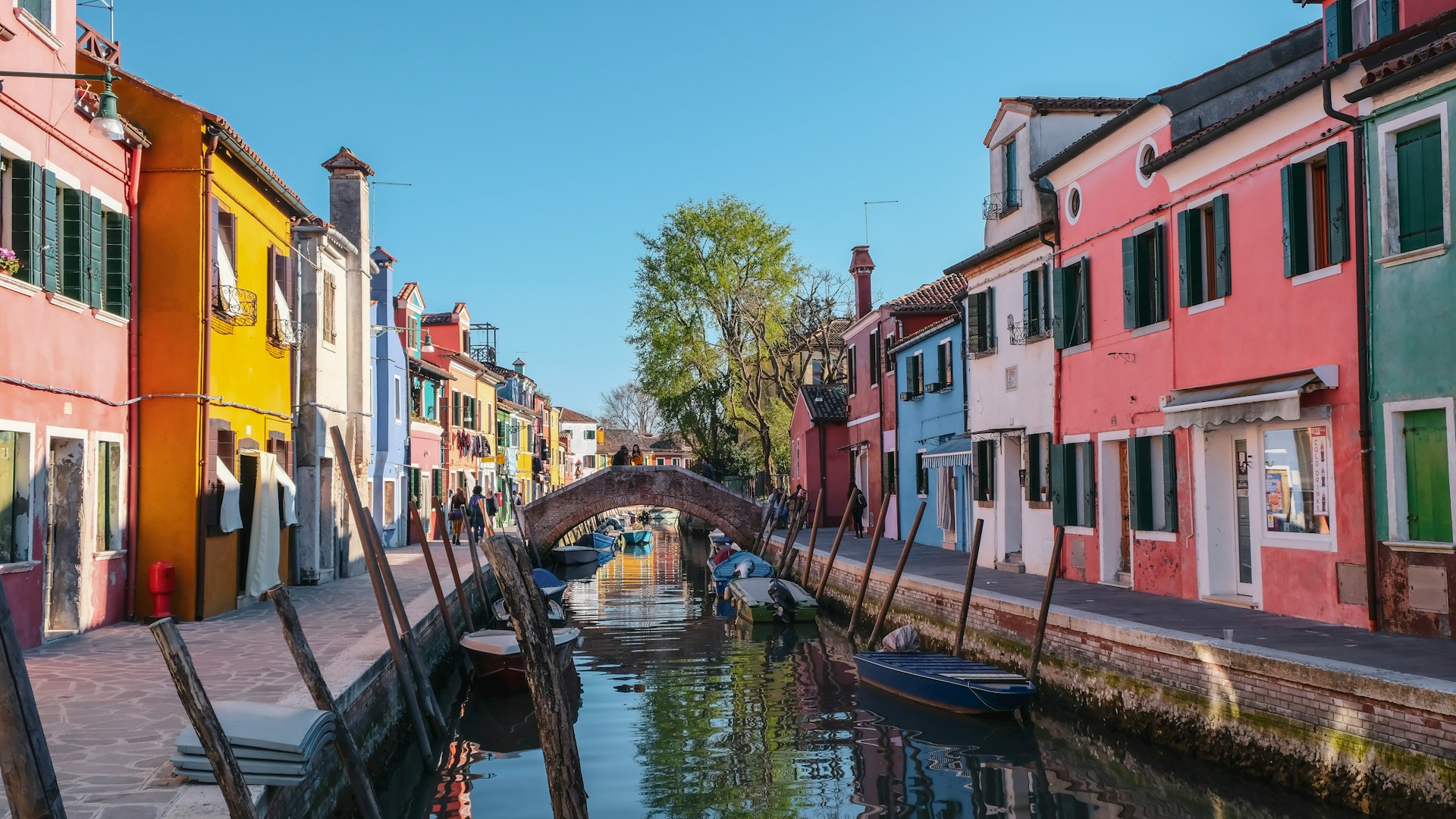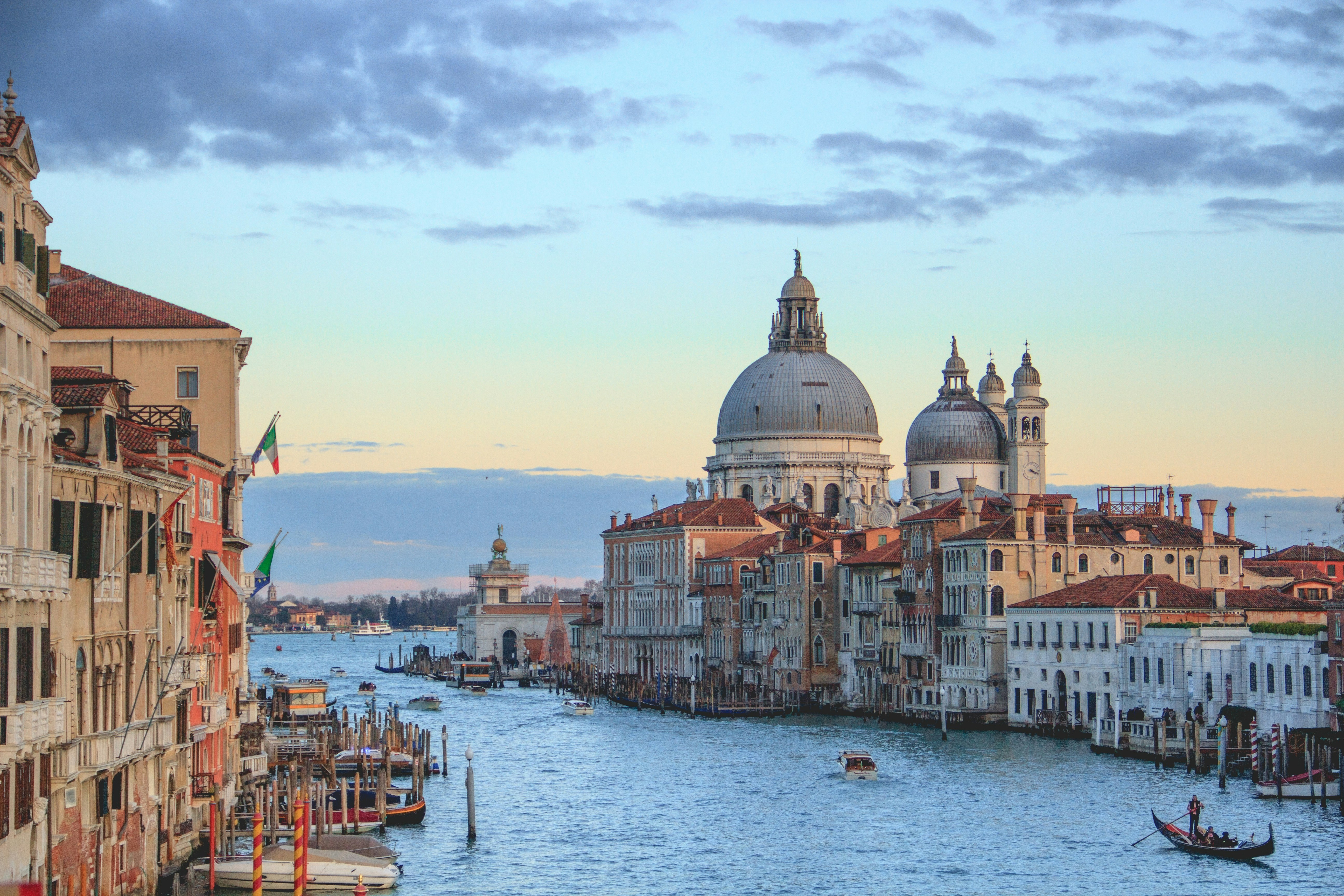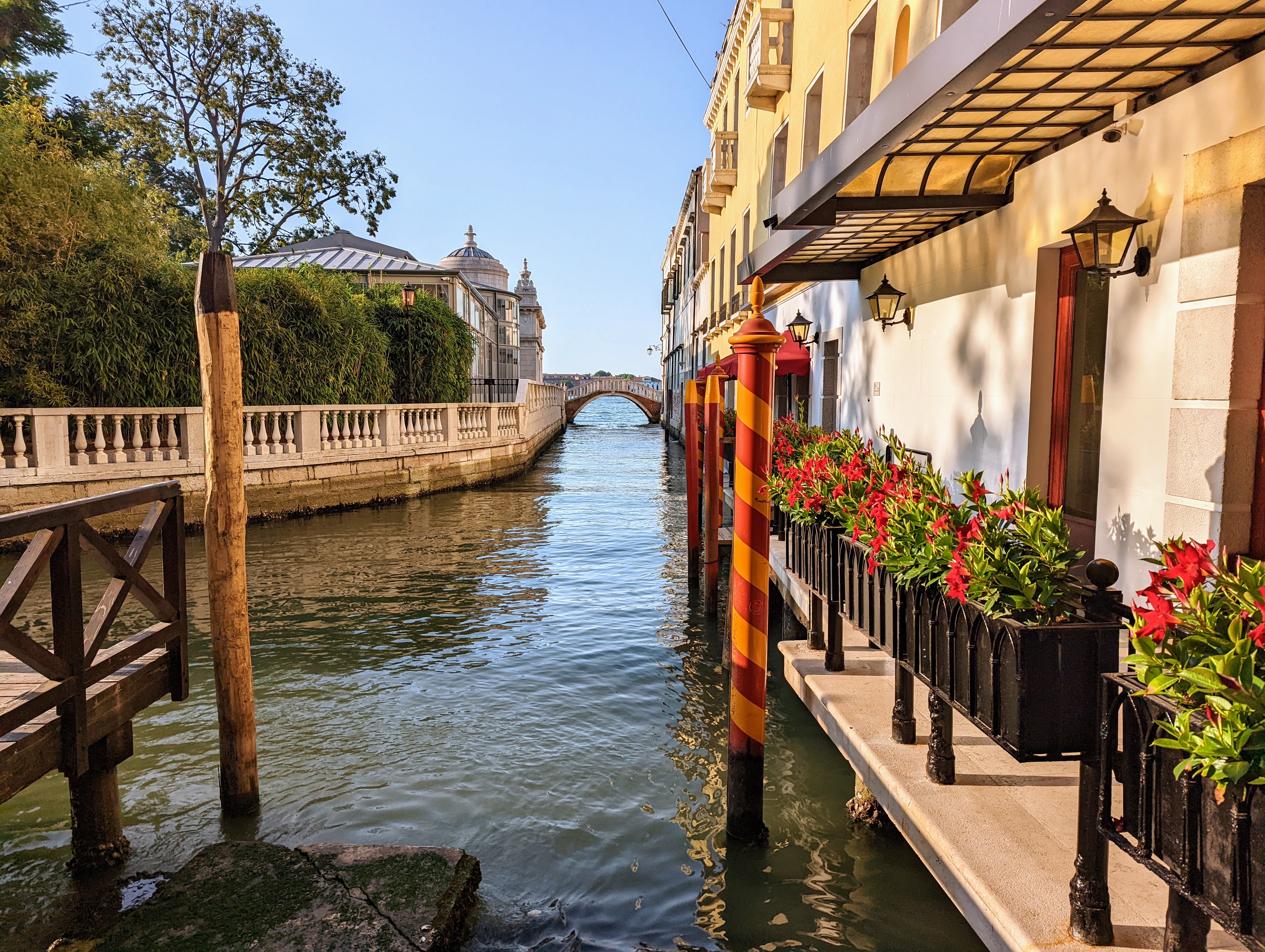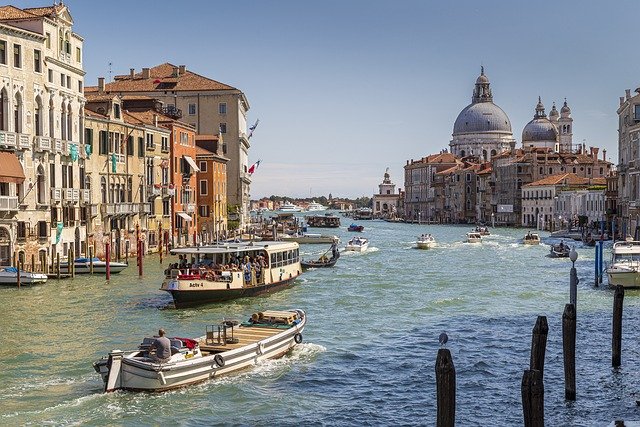EXPLORING THE ISLANDS OF VENICE
If you want to experience a more authentic side of Venice, consider exploring not only the less frequented parts of the main island, but also the islands of Venice.
The Venetian Lagoon is rich in natural beauty, art and history, and the islands of Venice have their own character and distinct landscapes.
Here is a list of the best islands worth a visit, starting from the most famous to the lesser known.
1. Murano: The Most Famous of the Islands of Venice
Murano is world-renowned for its exquisite glassmaking, a tradition dating back to the 13th century when Venetian authorities moved glass furnaces to the island to reduce fire risks in the main city. Apart from glass factories, the island also has charming canals, historic churches, and a quieter atmosphere than central Venice.
Highlights:
- Glass Factories and Workshops: Watch artisans as they create intricate glass objects through ancient techniques. Many workshops offer live demonstrations.
- Museo del Vetro (Glass Museum): Located in the Palazzo Giustinian, this museum showcases the history and art of glassmaking in Murano. This is one of the museums included in the Museum Pass.
- Basilica dei Santi Maria e Donato: Known for its impressive mosaic floor and Byzantine architecture.
Tips:
- Be cautious of shops selling mass-produced glass; to ensure you’re buying an authentic piece, look for official certifications.
Getting There: From the Fondamente Nove stop, take Line 3 or Lines 4.1/4.2. The journey takes approximately 20–30 minutes. Line 3 provides a direct route, while Lines 4.1 and 4.2 offer a more scenic circular trip around Venice. Your stop for Murano is Faro.
2. Burano: The Most Colourful of the Islands of Venice
Burano is a fishing island, famous for its brightly coloured houses and lace-making tradition. It’s a photographer’s paradise and one of the most picturesque of the Islands of Venice. The colourful houses are said to have been painted bright colours to help fishermen navigate the lagoon on foggy days. The lace-making tradition originated in the Renaissance. It is one of the oldest and most prestigious traditions of the Venetian Lagoon.
Highlights:
- Colourful Streets: Stroll along the canals lined with pastel-coloured houses.
- Museo del Merletto (Lace Museum): Learn about the history of lace-making. This museum is also included in the Museum Pass.
- Fresh Seafood: The island is known for its seafood restaurants serving Venetian classics like risotto al nero di seppia (squid ink risotto).
Tips:
- Weekdays are less crowded compared to weekends.
- Don’t miss the leaning bell tower of San Martino Church.
Getting There: Take vaporetto line 12 from Fondamente Nove. The trip takes around 40-45 minutes.
3. Torcello: The Cradle of Venetian Civilization
Just five minutes away by vaporetto from Burano, Torcello is one of the oldest inhabited Islands of Venice. It was once the heart of the Venetian Republic. Today, it’s a quiet retreat with fascinating historical landmarks and a dozen or so inhabitants.
Highlights:
- Basilica di Santa Maria Assunta: This ancient church features beautiful Byzantine mosaics.
- Ponte del Diavolo (Devil’s Bridge): A small, picturesque bridge which, according to legend, was built in a single night by the devil himself to win a bet.
Tips:
- Combine a visit to Torcello with Burano, as they’re just a short boat ride apart.
- Bring water and snacks, as dining options are limited on the island.
Getting There: Go to the Fondamente Nove pier and take the ACTV vaporetto - Line 12 to Burano and then Line 9 to Torcello.
4. Giudecca: A Local Escape
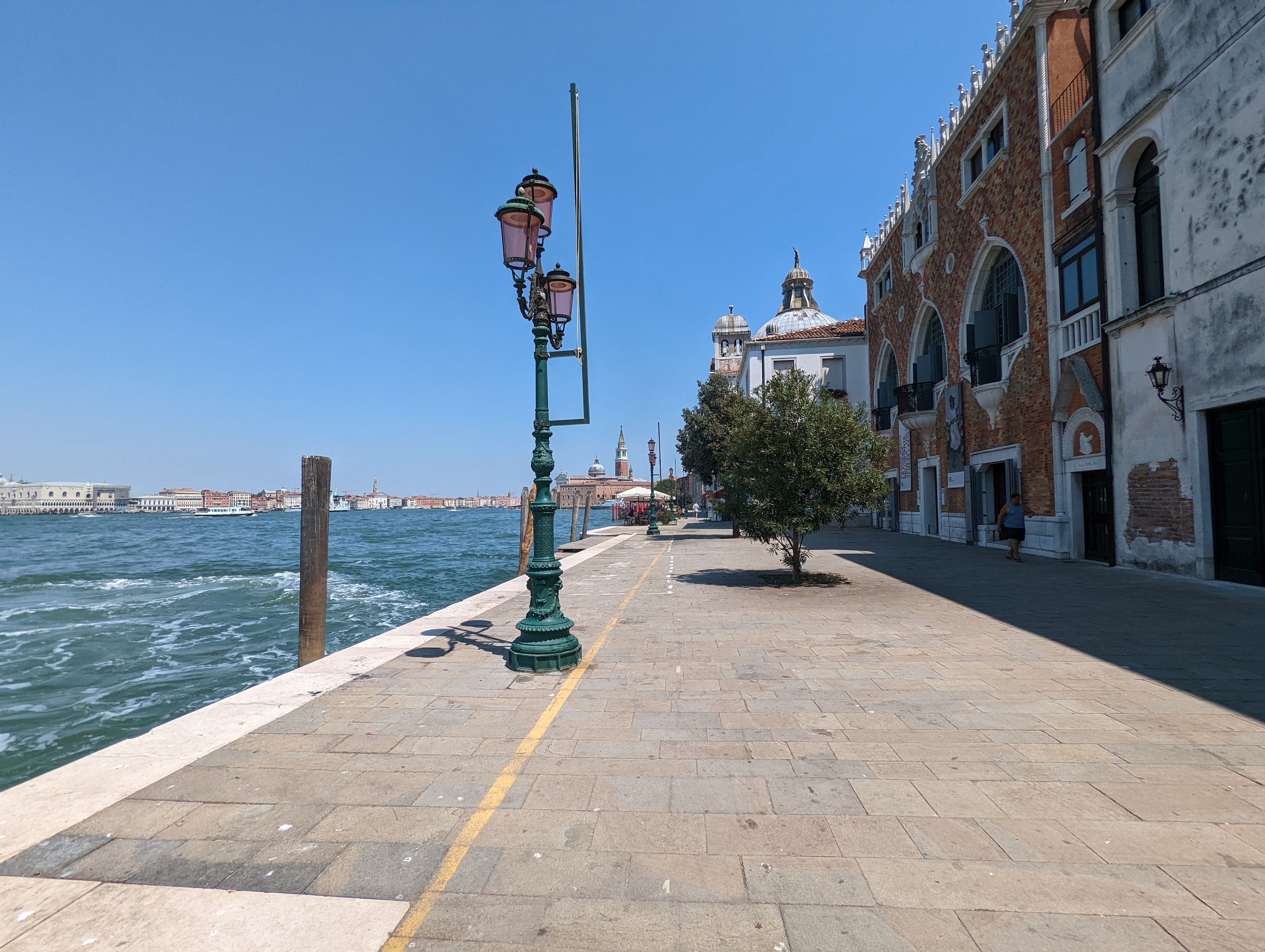 Giudecca
GiudeccaJust a short vaporetto ride from the main island of Venice, Giudecca is part of the Dorsoduro district. Historically an island with large palaces and gardens, it is now quiet and mostly residential. The views of Venice across the lagoon from this island are breath-taking.
Highlights:
- Chiesa del Santissimo Redentore (Church of the Redeemer): Designed by Andrea Palladio, this church celebrates the annual Feast of the Redeemer.
- Quiet Canals and Gardens: Giudecca is less crowded, making it ideal for peaceful strolls.
- Art Galleries: The island has a growing art scene, with spaces like the Molino Stucky offering cultural exhibitions.
Tips:
- Visit during sunset for amazing views of St Mark’s Square across the water.
- Enjoy a meal at one of the island’s authentic Venetian trattorias.
Getting There: Take vaporetto lines 2, 4.1 and 4.2.
5. Lido di Venezia: The Beach Escape of the Islands of
Venice
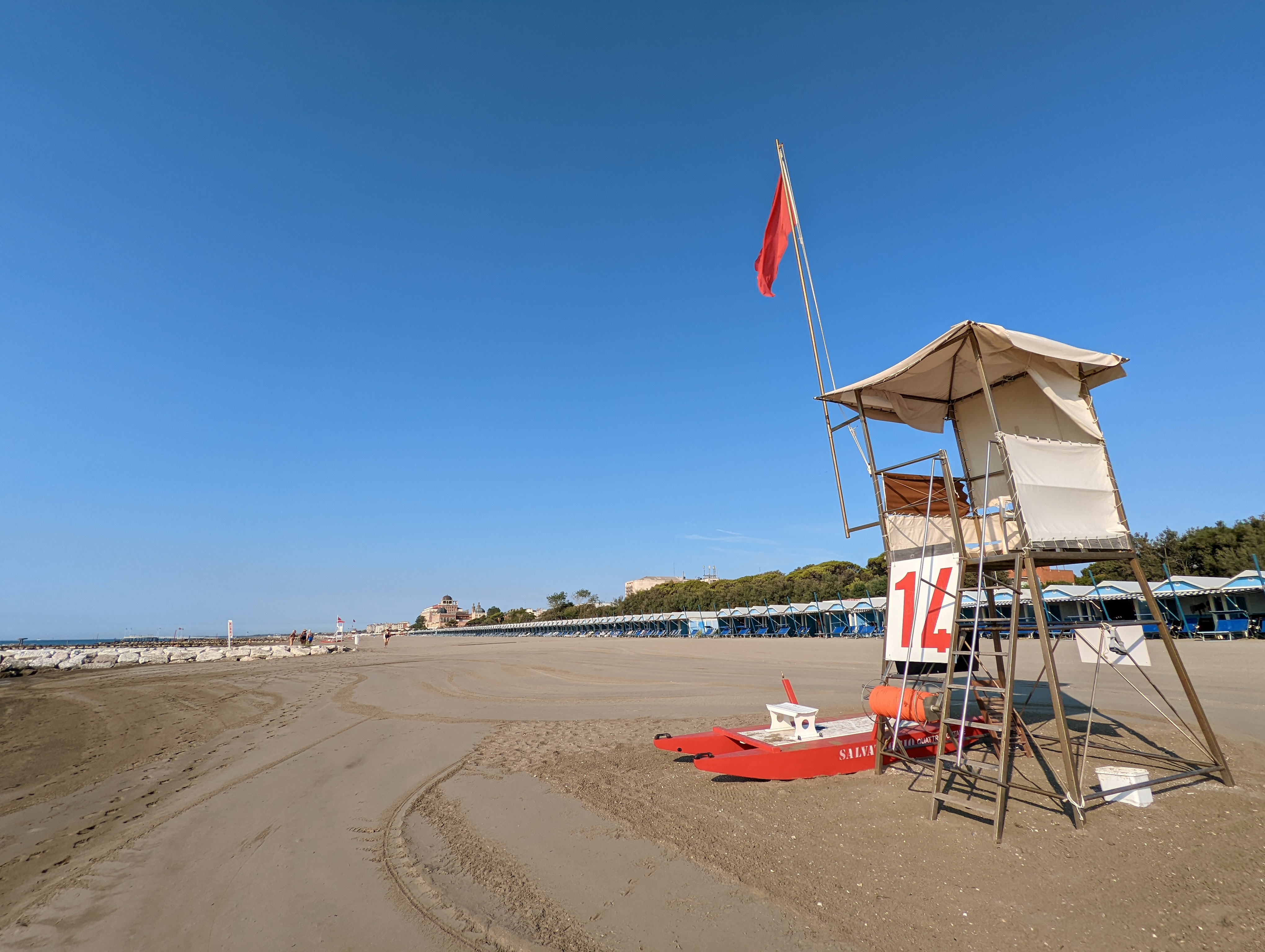 Beach on Lido
Beach on LidoKnown simply as Lido, this island serves as a beach getaway for Venetians and tourists alike. It’s also famous for hosting the Venice Film Festival. It has a more relaxed vibe than central Venice, and offers seaside resorts, Art Nouveau architecture, and a chance to enjoy cycling or just strolling along its streets.
Highlights:
- Beaches: The Lido boasts sandy beaches, a rarity in Venice. Public beaches and private beach clubs are available.
- Venice Film Festival: Held annually in late August or early September, it attracts stars and cinephiles from around the world.
- Gran Viale Santa Maria Elisabetta: The main street lined with shops, cafes, and restaurants.
Tips:
- Rent a bike to explore the island at your own pace, or take the bus to the beach.
- Visit in late summer to experience the Film Festival buzz.
Getting There: Line 6 of the ACTV vaporetto is the fastest line to reach the Lido as it only makes the main stops on its route to the terminus. Depart from Piazzale Roma, Zattere, Giardini Biennale or S. Elena. You can also get there on Lines 1, 5.1 and 5.2.
6. San Giorgio Maggiore: A Photographic
Gem
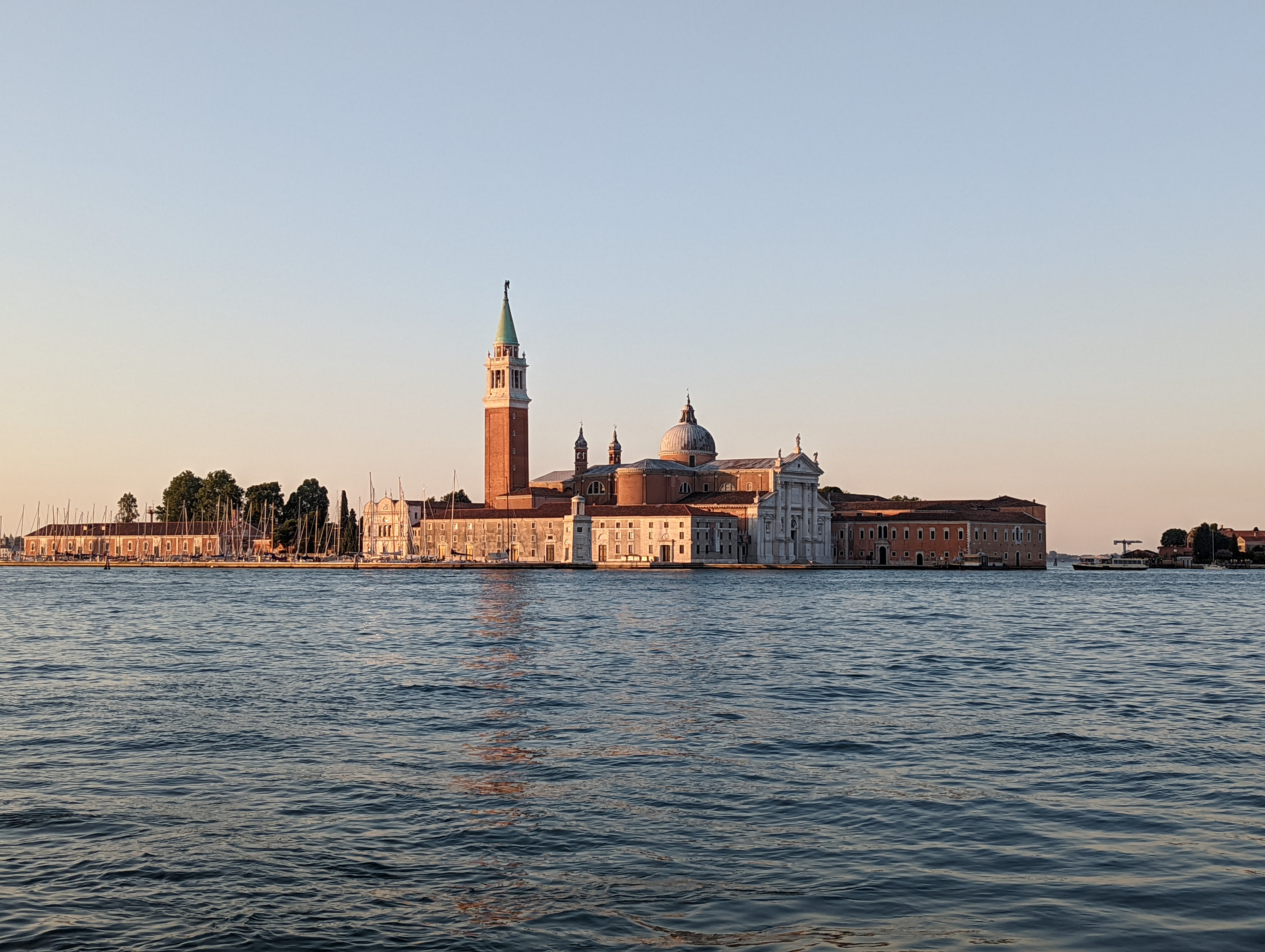 San Giorgio Maggiore
San Giorgio MaggioreThis small island, located just near Giudecca and right across from St Mark’s Square, is a favourite for its spectacular views and serene atmosphere.
Highlights:
- San Giorgio Maggiore Church: Another masterpiece by Palladio, with panoramic views from its bell tower.
- Cultural Events: The island often hosts art exhibitions and cultural events.
Tips:
- Visit early in the morning or late in the afternoon to avoid crowds.
Getting There: Take the ACTV line 2 vaporetto to San Giorgio departing from San Zaccaria for the shortest trip (3 minutes).
7. Sant’Erasmo:
Venice’s Garden Island
Often called the “vegetable garden of Venice,” Sant’Erasmo is a rural island known for its agricultural produce, including the prized castraure (baby artichokes). Quiet and unspoiled, full of fields, vineyards, and orchards, it’s perfect for walking or cycling.
Highlights:
- Cycling and Walking Trails: Rent a bike or walk to explore the island’s peaceful countryside. There are no buses on the island.
- Torre Massimiliana: A 19th-century fort offering a glimpse into the island’s history.
- Local Produce: Visit during the harvest season to sample fresh fruits and vegetables.
Tips:
- Ideal for a relaxing day trip away from the hustle and bustle.
- Bring a picnic to enjoy in the island’s tranquil surroundings.
Getting There: the island can be reached by public transport with vaporetto line 13 from Fondamente Nove and Treporti, or Murano. Stop at Sant’Erasmo Capannone.
8. San Michele: The Island of the Dead
San Michele serves as Venice’s cemetery island, a serene and reflective space filled with history and beautiful memorials.
Highlights:
- Cemetery Grounds: The island is the final resting place of notable figures like composer Igor Stravinsky and poet Ezra Pound.
- Church of San Michele in Isola: A Renaissance gem designed by Mauro Codussi.
Tips:
- Be respectful of the solemn atmosphere.
- Combine your visit with a trip to Murano, as the two islands are close.
Getting There: From Fondamente Nove take Line 4.1 or 4.2
9. Pellestrina: A Hidden Gem in the Islands of Venice
Located between the lagoon and the Adriatic Sea, Pellestrina is perhaps the quietest of the Islands of Venice, known for its fishing villages and unspoiled beaches.
Highlights:
- Beach Walks: Enjoy a peaceful walk on the long stretches of sandy beach.
- Local Cuisine: Try fresh seafood at one of the island’s family-run trattorias.
- Traditional Boats: Spot colourful fishing boats along the shore.
Tips:
- Rent a bike to explore the island at a leisurely pace.
- Visit the natural reserve of Ca’ Roman.
Getting There: From Venice take the vaporetto to the Lido (Lines 1, 6, 5.1, 5.2); from there take bus 11 to Alberoni, and then the ferry-boat to Santa Maria del Mare, at the northern end of Pellestrina.
10. Isola di San Servolo: A Cultural
Retreat
Halfway between San Marco and the Lido, this island once hosted one of the oldest monasteries in Venice, a hospital and a mental hospital. San Servolo is now a cultural and educational centre, and home to the Venice International University campus.
Highlights:
- Museum of Madness: Explore the history of the island’s psychiatric hospital.
- Art Exhibitions: San Servolo frequently hosts contemporary art events.
- Peaceful Atmosphere: The island’s gardens offer a serene escape.
Tips:
- Check event schedules online before visiting.
Getting There: The island is accessible by vaporetto from St Mark’s Square (San Zaccaria), Line 20.
Go back to the Main Page about Venice
